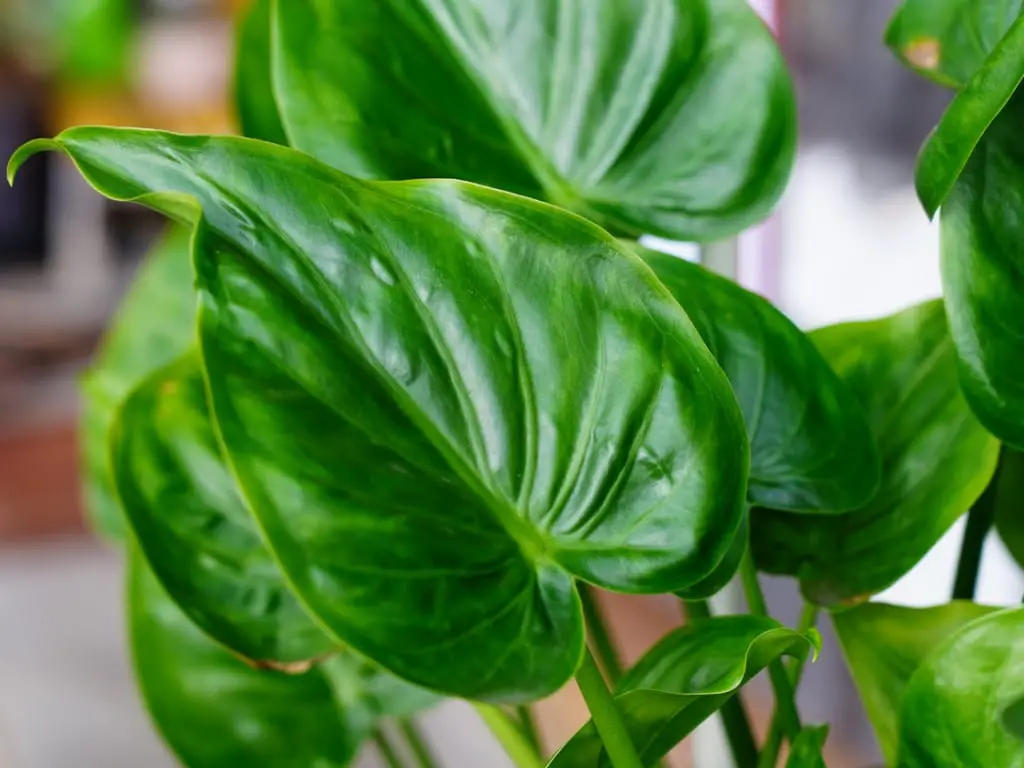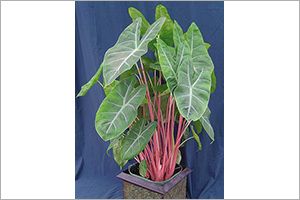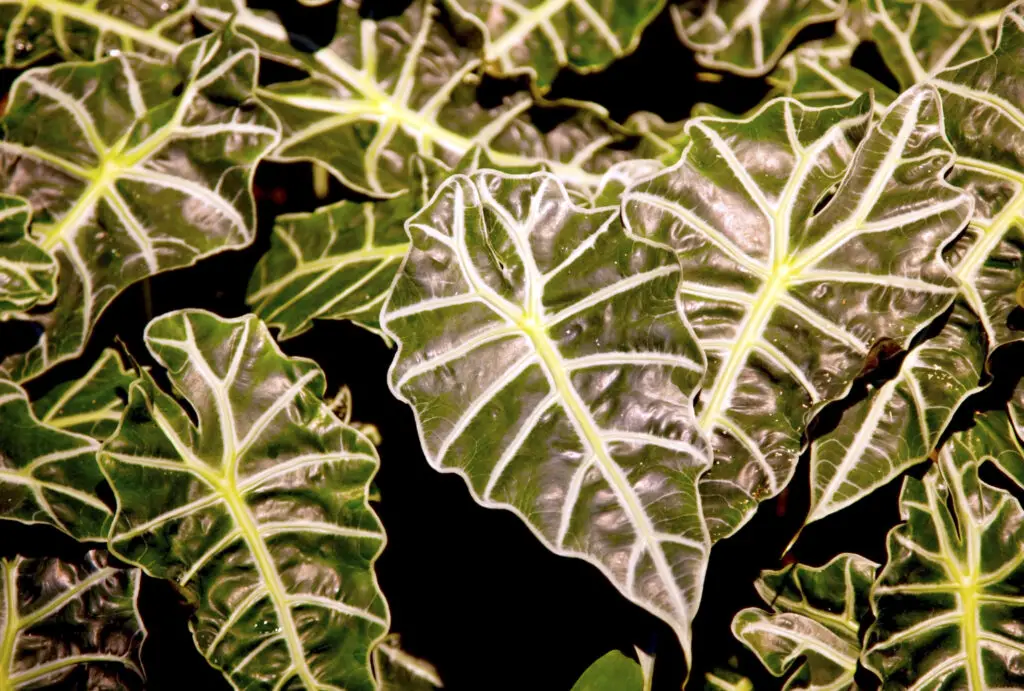Alocasia plants are toxic to dogs. They contain calcium oxalate crystals, which can cause irritation and discomfort if ingested. Symptoms may include drooling, vomiting, and difficulty swallowing. It is best to keep these plants out of reach of pets.
Understanding Alocasia
Alocasia, commonly known as elephant ear plants, are popular for their striking foliage and unique shape. These tropical plants belong to the family Araceae and are native to Asia and the eastern coast of Australia. They come in various species, each showcasing large, heart-shaped leaves that can be quite dramatic in appearance. Alocasia plants thrive in warm, humid environments, making them ideal houseplants for indoor gardens.

While many plant enthusiasts adore Alocasia for their beauty, it is crucial to consider their safety around pets, especially dogs. Pet owners often face the challenge of creating a safe environment for their furry companions while still enjoying the aesthetics that houseplants offer. Understanding the potential risks associated with certain plants can help in making informed decisions about which ones to keep in the home.
The Toxicity of Alocasia
Alocasia plants contain calcium oxalate crystals, which are responsible for their toxicity. These crystals can cause irritation to the mouth, throat, and gastrointestinal tract if ingested by dogs. Symptoms of poisoning may vary in severity depending on the amount consumed and the individual dog’s sensitivity.
The following symptoms may indicate that a dog has ingested part of an Alocasia plant:

- Drooling
- Vomiting
- Diarrhea
- Pawing at the mouth
- Swelling of the mouth or throat
- Difficulty swallowing
- Loss of appetite
If you suspect your dog has ingested any part of an Alocasia plant, it is essential to seek veterinary care immediately. Early intervention can help manage symptoms and prevent serious health issues.
Safe Alternatives to Alocasia
If you are concerned about the toxicity of Alocasia but still want to enjoy beautiful houseplants, there are several pet-safe alternatives. These plants not only add greenery to your home but also pose no risk to your dogs. Here are some options:
- Spider Plant (Chlorophytum comosum)
- Boston Fern (Nephrolepis exaltata)
- Ponytail Palm (Beaucarnea recurvata)
- Bamboo Palm (Chamaedorea seifrizii)
- Ponytail Plant (Beaucarnea recurvata)
When selecting houseplants, always research their safety concerning pets. Many online resources provide information about toxic and non-toxic plants. Consulting your veterinarian can also help you choose the best options for your home.

Preventing Access to Toxic Plants
For pet owners who choose to keep Alocasia plants or other toxic varieties, taking precautions is vital. Here are some strategies to help prevent dogs from accessing these plants:
- Place plants on high shelves or in hanging pots out of reach.
- Use barriers such as baby gates to restrict access to certain areas.
- Train your dog not to chew on plants by providing alternative chewing options.
- Consider using repellents that are safe for pets to discourage them from approaching plants.
Being proactive in managing your home’s environment can help ensure the safety of your pets while allowing you to enjoy your favorite plants. Always monitor your pets closely, especially when introducing new plants into the home.
Final Note on Plant Safety
Plant safety is an essential consideration for pet owners. Understanding which plants are toxic and how to manage them effectively can make a significant difference in protecting your furry friends. Always prioritize their well-being while also creating a loving and beautiful living space.
Identifying Symptoms of Alocasia Poisoning in Dogs
If a dog ingests part of an Alocasia plant, recognizing the symptoms is crucial for timely intervention. The symptoms can vary in intensity based on the amount consumed and the individual dog’s size and health. Understanding these signs can help pet owners react swiftly and effectively.
Common Symptoms
The most common symptoms associated with Alocasia poisoning include:
- Oral Irritation: Dogs may show signs of discomfort around their mouth, such as pawing at their face or excessive licking.
- Drooling: Increased salivation is a frequent response to the irritation caused by calcium oxalate crystals.
- Vomiting: If the plant is ingested, vomiting can occur as the body attempts to expel the harmful substance.
- Difficulty Swallowing: Swelling in the mouth or throat can make swallowing painful or challenging.
- Diarrhea: Ingestion may lead to gastrointestinal upset, resulting in diarrhea.
If you notice any of these symptoms, it is essential to take action quickly. Contact your veterinarian or a pet poison control hotline for guidance.
What to Do If Your Dog Ingests Alocasia
In the event that your dog has ingested Alocasia, it is vital to remain calm and act promptly. Here are steps to follow:
- Assess the Situation: Determine how much of the plant was consumed. If possible, identify the specific species of Alocasia.
- Check for Symptoms: Monitor your dog for any signs of distress or discomfort.
- Contact a Veterinarian: Reach out to your veterinarian or an emergency animal clinic for advice. Provide them with details about the incident.
- Follow Medical Guidance: Follow the veterinarian’s instructions carefully. They may recommend bringing your dog in for examination or treatment.
It is essential to act quickly, as prompt treatment can prevent more severe health issues from developing.
The Importance of Plant Knowledge for Pet Owners
Understanding which plants are safe and which are toxic is crucial for pet owners. Many popular houseplants, like Alocasia, can pose risks. Being informed helps prevent accidental poisonings and ensures a safer environment for pets.
Researching Plants Before Purchase
Before bringing a new plant into your home, consider researching its effects on pets. Here are some steps you can take to ensure you choose safe plants:
- Consult Reputable Sources: Use online resources, such as the ASPCA’s list of toxic and non-toxic plants, to check the safety of specific plants.
- Ask Retailers: When purchasing plants, inquire with employees about their knowledge of plant toxicity regarding pets.
- Join Online Communities: Engage with other pet owners on forums or social media groups to share experiences and recommendations.
The Role of Education in Prevention
Educating yourself and your family about plant toxicity can significantly reduce the risk of accidental ingestion. Here are additional ways to promote awareness:
- Teach Children: Ensure children understand the importance of not touching or eating unfamiliar plants.
- Create a Plant List: Maintain a list of safe plants in your home for easy reference.
- Regularly Review Information: Keep updated with new findings regarding plant toxicity, as science continues to evolve.
A proactive approach to education can protect your pets and create a harmonious living environment where both plants and pets coexist safely.
Providing Alternatives to Toxic Plants
If you love the aesthetics of Alocasia but are concerned about its toxicity, consider incorporating alternative plants that are pet-friendly. These options can enhance your home’s decor without posing risks to your dogs.
Pet-Safe Alternatives
Here are some attractive options that are safe for homes with dogs:
- Parlor Palm (Chamaedorea elegans): A small palm that thrives in low light and adds a tropical touch.
- Boston Fern (Nephrolepis exaltata): This lush plant enhances air quality and requires humidity.
- Ponytail Palm (Beaucarnea recurvata): Unique appearance and easy care make it a popular choice.
- Zebra Plant (Haworthiopsis fasciata): A succulent that needs minimal watering and is visually appealing.
Selecting pet-safe plants allows you to enjoy greenery without compromising your dog’s health. By making informed choices, you can cultivate a beautiful space that is also safe for your furry companions.
Creating a Dog-Friendly Home with Plants
Designing a home that accommodates both pets and plants requires careful planning. By understanding the needs of your dog and the characteristics of various plants, you can create a safe and aesthetically pleasing environment. Here are some strategies to consider when incorporating plants into a dog-friendly home.
3>Strategic Plant Placement Where you place your plants can significantly impact both their health and your dog’s safety. Consider these placement tips: Implementing these strategies ensures that your plants thrive while keeping your dogs safe from harmful substances. Training your dog to respect boundaries is an essential part of creating a pet-friendly environment. Here are some training techniques to consider: Teaching your dog basic commands can help keep them away from plants. Focus on commands like: Another effective technique is to create positive associations with non-plant areas. Here’s how: Consistent training helps establish boundaries while ensuring that your dog feels secure and loved in their environment. Even with precautions in place, it is essential to monitor your dog’s behavior around plants regularly. Observing your pet can help you identify any potential issues early on. Here are some signs to watch for: If you notice concerning behaviors, it may be time to reassess your plant choices or reinforce training efforts to maintain a safe living space. If you have an outdoor garden or patio, it is equally important to consider the safety of any plants you choose for those areas. Many outdoor plants can be toxic to dogs, so selecting non-toxic varieties is crucial. Here are some beautiful outdoor plants that are safe for dogs: Selecting non-toxic outdoor plants allows you to enjoy gardening without worrying about your dog’s safety while they explore the yard or patio. Your veterinarian can be an invaluable resource when it comes to understanding plant toxicity and ensuring pet safety. Regular check-ups provide opportunities to discuss any concerns regarding plants in your home or garden. If you are considering adding new plants to your home, consult your veterinarian first. They can provide insights into which plants are safest for your specific breed and size of dog. Additionally, they may offer: Your veterinarian’s expertise can greatly assist in maintaining a safe and healthy environment for both you and your furry friends. In addition to immediate symptoms, it is also essential to be aware of potential long-term effects that can arise from a dog ingesting toxic plants like Alocasia. While many dogs may recover from mild cases of poisoning, there can be lingering health concerns that owners should monitor. Here are some possible long-term effects that can arise from exposure to toxic plants: Being vigilant about your dog’s health after a poisoning incident is crucial. Regular veterinary check-ups can help identify any long-term effects early on. Ensuring that your home is safe for dogs while still enjoying plants is a balancing act. Here are some additional strategies for creating a pet-friendly environment: Conduct regular assessments of the plants in your home. This includes: Technology can also assist in maintaining a pet-safe home. Consider using: These tools can provide peace of mind, especially when you are not able to supervise your pets directly. As a pet owner, connecting with other dog owners can provide valuable support and information. Participating in community forums or local groups can help you share experiences and learn from others. You can exchange tips on creating safe spaces for pets and discuss plant options that are both beautiful and non-toxic. Caring for a dog while maintaining a passion for houseplants requires diligence and awareness. Understanding the toxicity of Alocasia and similar plants is vital for any pet owner. By recognizing the symptoms of poisoning, consulting with veterinarians, and selecting pet-safe alternatives, you can create an environment that is both aesthetically pleasing and safe for your furry companions. The key takeaways include: By prioritizing the well-being of your pets while enjoying the beauty of plants, you can foster a harmonious living space that nurtures both your love for greenery and your commitment to pet safety.Training Your Dog Around Plants
Basic Commands
Creating Positive Associations
Monitoring Your Dog’s Behavior
Choosing Non-Toxic Plants for Outdoor Spaces
Pet-Friendly Outdoor Plants
The Role of Veterinary Guidance
Consultation in Plant Selection
Understanding the Long-Term Effects of Plant Toxicity
Potential Long-Term Health Issues
Creating a Safe Environment for All Pets
Regularly Assessing Your Plant Collection
Utilizing Technology for Pet Safety
The Role of Community and Support
Final Thoughts
